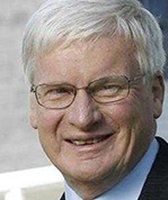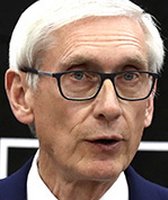Get PolitiFact in your inbox.
Ryan says wealthy taxpayers get most of the deductions in the tax code
Paul Ryan pushed back against Democratic claims that the middle class would see a tax increase under Mitt Romney’s proposals, saying the reality of the tax code doesn’t square with that.
Ryan fielded questions about the tax plan in a Fox News interview as he headed to the Republican National Convention in Tampa.
"The people who get most of the deductions are the people in the top tax brackets, the wealthy, not middle-income taxpayers," Ryan explained. "And so what we’re saying is by getting rid of these deductions that higher income earners get, more of their income is subject to taxation, and that means we can lower tax rates for everybody."
The question of whose ox gets gored is front and center every time tax reform is considered, of course.
Was the vice presidential nominee correct that top earners get most of the breaks in the current income tax code?
Three tax experts told us that tax preferences are indeed tilted heavily to the rich, though how you define "rich" makes a difference.
The most detailed report we found on how much households save because of tax preferences came from the Tax Policy Center in September 2011.
It shows that the top fifth of earners get two-thirds of the total pie of savings from individual income tax breaks, including preferential rates on itemized deductions such as home mortgage interest and lower capital gains tax rates. The study uses 2011 income data.
The top 5 percent alone get 41 percent of the total tax savings associated with these breaks, the study found. The "middle" 60 percent of earners, by contrast, get less than a third of the benefit, said Roberton Williams, a senior fellow with the Urban Institute-Brookings Institution Tax Policy Center.
The effect is even more pronounced if just the major itemized deductions are eliminated, but other breaks are kept, Williams said.
It makes sense, Williams said. Lower earners have lower tax rates, so they get less benefit from the breaks than wealthier people who have more to deduct and pay higher tax rates.
"They do benefit disproportionately," he said.
Daniel Mitchell, a Cato Institute senior fellow who studies tax reform, said the state and local tax deduction and charitable contributions deduction are "very heavily tilted to the rich." He added: "The mortgage interest deduction is tilted to the rich as well, but not as dramatically."
We should note that Romney’s tax reform plan does not call for dumping all tax deductions. He has said that if some deductions were eliminated, overall rates could be lowered. While he’s provided some specifics, the fate of many deductions is left unclear.
As always in tax matters, there are some nuances here.
In sheer numbers, some tax deductions such as the mortgage interest deduction are claimed by far more middle- and lower-income people than by people in the top brackets, IRS data shows. That’s in part a reflection of how broad the middle class is compared to the upper-income tiers.
Tax savings from various preferences are spread throughout the population, from tax credits for low-income people to investment tax breaks for the wealthy, Williams noted.
Ryan’s campaign cited IRS data showing greater benefits as you rise through the tax brackets, and that’s confirmed in the Tax Policy Center analysis, we found.
Our third expert, William McBride, chief economist for the Tax Foundation, said judging Ryan’s statement "depends on the definition of rich."
Ryan gave a clue - people in the "top brackets." But in 2011 there were six income tax brackets ranging from 10 percent to 35 percent, and drawing the line between the middle class and "wealthy" is a subjective call.
The big benefits for the top fifth of earners, as found by the Tax Policy Center, are in a group whose incomes start at $103,000. Is that "wealthy?"
What if, like President Barack Obama, you set $250,000 and up as a benchmark for raising tax rates for the "wealthy?" People in that group got less than 40 percent of the tax savings -- a figure that is somewhat at odds with the "most" description used by Ryan.
Still, our experts said that, overall, it’s clear the benefits are tilted heavily to the upper end of the income scale. One more example: Just 0.1 percent of earners alone got 13 percent of the benefits, the Tax Policy Center study found.
Our ruling
Ryan, countering criticism of Romney tax plan, said that wealthy taxpayers, not middle-income earners, get "most of the deductions" in the tax code.
He’s on target, with the caveat that it partly depends on the definition of "wealthy." Wealthier people pay higher tax rates and tend to get more benefit from deductions than lower-income earners.
We rate his statement Mostly True.
Our Sources
Fox News, video of Paul Ryan interview, Aug. 27, 2012
Phone interview with Roberton Williams, Tax Policy Center, Aug. 28, 2012
Email interview with William McBride, Tax Foundation, Aug. 28, 2012
Email interview with Daniel Mitchell, Cato Institute, Aug. 28, 2012
Email interview with Brendan Buck, spokesman, Ryan campaign, Aug. 28, 2012
Tax Policy Center, Distribution of Tax Expenditures, Table T11-0322, accessed Aug. 28, 2012
IRS, SOI Tax Stats, Individual Income Tax Returns 1304, accessed Aug. 28, 2012
Browse the Truth-O-Meter
More by Dave Umhoefer
Ryan says wealthy taxpayers get most of the deductions in the tax code
Support independent fact-checking.
Become a member!
In a world of wild talk and fake news, help us stand up for the facts.



















































